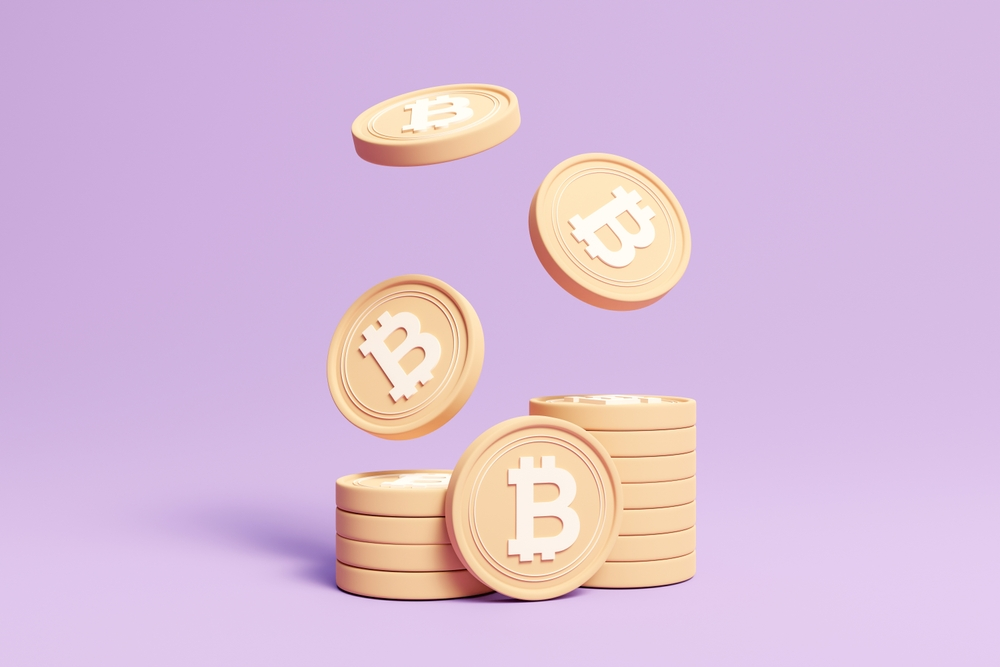The crypto landscape has evolved dramatically, and Bitcoin holders now have sophisticated services and options to access liquidity without selling their digital assets. Bitcoin backed lending has emerged as a powerful financial tool, allowing you to unlock the value of your Bitcoin holdings while maintaining ownership and potential upside exposure.
In 2025, this market has matured significantly, with institutional-grade platforms offering competitive rates, including lower interest rates, and robust security measures. Whether you’re looking to access funds for large purchases, business expansion, or simply need cash without triggering taxable events, Bitcoin backed loans represent a smarter way to leverage your crypto holdings.
This comprehensive guide covers everything you need to know about Bitcoin backed lending, from understanding loan to value ratios to selecting the right platform for your needs.
What is Bitcoin Backed Lending?
Bitcoin backed lending allows you to use your Bitcoin as collateral to secure loans denominated in U.S. dollars, stablecoins, or other fiat currencies. Instead of selling your crypto assets and potentially missing out on future appreciation, you can borrow against them while retaining full ownership.
The process works through over-collateralization, meaning you typically need to deposit more Bitcoin than the loan amount you receive. Loan to value ratios commonly range from 50-70% of your collateral’s value, providing a security buffer for lenders against Bitcoin’s price volatility.
Current interest rates across major platforms range from 8.95% to 12.4% annual interest rate, significantly competitive compared to many traditional loans. Unlike conventional loans, no credit check is required – your Bitcoin serves as the primary security for the loan.
The key advantage is maintaining your Bitcoin exposure while gaining access to immediate liquidity. This approach has gained popularity among both individual investors and businesses seeking to optimize their capital efficiency without losing potential upside from their digital asset holdings, allowing them to earn interest on their investment .
How Bitcoin Backed Loans Work
The Bitcoin backed loan process typically follows these steps:
Application and Approval: Most platforms offer streamlined applications requiring basic identity verification through KYC procedures. Since your Bitcoin serves as collateral, traditional credit checks aren’t necessary, making approval faster than conventional loans.
Collateral Deposit: Once approved, you transfer your Bitcoin to the lender’s custody or smart contract. Reputable platforms use institutional-grade cold storage and multi-signature security protocols to protect your crypto collateral.
Loan Amount Calculation: Your loan amount depends on the loan to value ratio offered by the platform. For example, with a 50% LTV ratio, $100,000 worth of Bitcoin would secure a $50,000 loan.
Funding: After collateral confirmation, most platforms fund loans within 5.6 to 24 hours. You can typically receive funds via wire transfer, ACH, or stablecoin deposits directly to your account.
Repayment Terms: Bitcoin backed loans often feature flexible repayment structures. Many platforms don’t require monthly payments, allowing you to repay the loan amount plus accrued interest whenever convenient, without prepayment penalties.
Loan-to-Value (LTV) Ratios Explained
Understanding LTV ratios is crucial for Bitcoin backed lending. The LTV represents the percentage of your collateral’s value that you can borrow. A standard 50% LTV means you can get a loan worth half your Bitcoin’s current market value.
Higher LTV options, sometimes reaching 70%, are available on select platforms but carry increased liquidation risk. When Bitcoin’s price drops and your LTV exceeds the platform’s threshold, you’ll receive a margin call notification requiring additional collateral or partial repayment.
If you can’t meet margin call requirements, the platform may liquidate enough of your Bitcoin to bring the LTV back within acceptable limits. This automatic liquidation protects lenders but can result in forced selling during unfavorable market conditions.
Conservative borrowers often choose lower LTV ratios around 30-40% to provide substantial buffer against price volatility and avoid margin called scenarios.
Benefits of Bitcoin Backed Lending
Bitcoin backed loans offer several compelling advantages over traditional financing options and outright crypto sales:
Tax Efficiency: Borrowing against Bitcoin doesn’t create taxable events, unlike selling your crypto holdings. This allows you to access funds while deferring capital gains taxes until you actually sell. For long-term holders, this can mean the difference between short-term and long-term capital gains treatment.
Maintain Bitcoin Exposure: Instead of selling and missing potential price appreciation, you keep your Bitcoin position intact. If Bitcoin’s value increases significantly, your crypto holdings continue growing while you use the borrowed funds.
No Credit Requirements: Traditional loans often involve extensive credit checks and income verification. Bitcoin backed loans, also known as crypto loans, focus primarily on your collateral value, making them accessible to borrowers with limited credit history or complex income situations.
Flexible Terms: Most platforms offer interest-only payments or even no monthly payments required. You can repay early without penalties, providing maximum flexibility compared to conventional loans with rigid payment schedules.
Speed and Accessibility: Crypto loans can be approved and funded within hours, dramatically faster than traditional bank loans that may take weeks. This speed makes them ideal for time-sensitive opportunities or urgent funding needs, allowing investors to access money quickly .
Global Access: Many Bitcoin lending platforms operate internationally, providing access to liquidity regardless of your geographic location, unlike traditional banks with limited coverage areas.
Top Bitcoin Lending Platforms 2025
The Bitcoin lending industry has matured significantly, with several established platforms offering competitive terms and robust security measures:
| Platform | Interest Rate | Max LTV | Minimum Loan | Key Features |
| Ledn | 10.4% APR | 50% | $1,000 | SOC 2 compliance, $391M funded in 90 days |
| SALT | From 8.95% | Up to 70% | $5,000 | Operating since 2016, largest US licensed provider |
| Xapo Bank | Varies | 60% | $1,000 | Up to $1M loans, zero fees, 30-365 day terms |
| Nexo | 12.4% APR | 50% | $500 | Instant approval, daily compounding |
Ledn has established itself as a leader in Bitcoin backed lending, processing over $391 million in loans in the last 90 days alone. Their SOC 2 compliance and conservative 50% maximum LTV ratio appeal to risk-conscious borrowers seeking institutional-grade security.
SALT operates as the largest licensed crypto lending provider in the United States, with operations dating back to 2016. Their experience navigating various market cycles and regulatory environments provides stability, while offering competitive rates starting at 8.95% and higher LTV options up to 70%.
Xapo Bank differentiates itself by offering loans up to $1 million with zero fees structure. Their flexible terms ranging from 30 to 365 days cater to both short-term liquidity needs and longer-term financing requirements.
Platform Security Comparison
Security remains paramount when selecting a Bitcoin lending platform. Leading providers implement multiple layers of protection:
Cold Storage Practices: Reputable platforms store the majority of crypto collateral in offline cold storage systems, protected from online threats. Multi-signature wallets require multiple keys for any transaction, preventing single points of failure.
Insurance Coverage: Some platforms maintain insurance policies covering stored crypto assets, though coverage terms vary significantly. Always verify specific insurance details and limitations.
Regulatory Compliance: Platforms operating under proper licenses and regulatory oversight generally offer stronger consumer protections. SALT’s US licensing and Ledn’s SOC 2 compliance demonstrate commitment to regulatory standards.
Track Record: Platforms that survived the 2022 crypto market volatility demonstrate resilience and sound risk management. Many lending platforms collapsed during this period, making survival a key credibility indicator.
Risks and Considerations
While Bitcoin backed lending offers significant benefits, understanding the risks is essential for making informed decisions, subject to market condit :
Liquidation Risk: Bitcoin’s price volatility represents the primary risk. Rapid price drops can trigger margin calls, requiring immediate action to avoid forced liquidation of your collateral. Even minor market corrections can push high-LTV loans into liquidation territory.
Platform Counterparty Risk: Centralized platforms hold custody of your Bitcoin, creating dependency on their financial stability and security practices. Platform failures or security breaches could potentially impact your collateral, though reputable providers implement strong safeguards.
Interest Rate Costs: Annual interest rates typically range from 8.95% to 12.4%, which can accumulate significantly over longer loan periods, affecting how you choose to invest. Calculate total borrowing costs carefully, especially for extended loan terms.
Forced Sales: Liquidation events force Bitcoin sales at potentially unfavorable prices during market downturns. This can crystallize losses that might have been temporary if you maintained longer-term holding strategies.
Tax Complexity: While borrowing doesn’t create immediate taxable events, liquidated collateral does. Consult with qualified tax advice professionals to understand implications in your jurisdiction, as rules vary significantly across different countries.
Risk Management Strategies
Successful Bitcoin backed lending requires proactive risk management:
Conservative LTV Selection: Choose loan amounts well below maximum LTV limits. Borrowing at 30-40% LTV instead of 70% provides a substantial buffer against price volatility and reduces liquidation probability.
Price Monitoring: Set up alerts for Bitcoin price movements and monitor your loan’s LTV ratio regularly. Many platforms provide automated notifications when you approach margin call thresholds.
Emergency Reserves: Maintain additional Bitcoin or cash reserves to meet potential margin calls quickly. Having ready funds available prevents forced liquidation during temporary price dips.
Platform Diversification: For large Bitcoin holdings, consider spreading loans across multiple reputable platforms to reduce concentration risk and potentially requiring more collateral to secure favorable terms.
Getting Started with Bitcoin Loans
Beginning your Bitcoin backed lending journey requires careful preparation and platform selection:
Minimum Requirements: Most platforms require at least $1,000 USD equivalent in Bitcoin, though minimum loan amounts vary. Some platforms like Nexo accept as little as $500, while others require $5,000 minimum loan amounts.
Account Setup: The application process typically involves identity verification through KYC procedures. Prepare government-issued identification, proof of address, and potentially income documentation depending on loan size and jurisdiction.
Geographic Considerations: Platform availability varies by location due to regulatory restrictions. US residents have access to licensed providers like SALT, while international users may have different platform options.
Custody Procedures: Understand each platform’s collateral custody arrangements. Some use third-party institutional custodians, while others maintain in-house storage. Verify insurance coverage and security protocols before transferring your Bitcoin
Application Requirements
Different platforms have varying requirements for loan approval:
Identity Verification: All reputable platforms require government-issued photo identification and address verification. This process typically takes 24-48 hours for initial approval.
Business vs Individual Accounts: Business borrowers may need additional documentation including business registration, beneficial ownership information, and commercial banking details. Individual accounts generally have simpler requirements.
Geographic Restrictions: Some platforms exclude certain jurisdictions due to regulatory constraints. Verify platform availability in your location before beginning the application process.
Account Minimums: Beyond minimum loan amounts, some platforms impose minimum account values or ongoing balance requirements for maintaining borrowing privileges.
Frequently Asked Questions
Can I repay my loan early without penalties?
Most Bitcoin lending platforms allow early repayment without prepayment penalties, providing flexibility to close your loan whenever convenient. This contrasts favorably with many traditional loans that charge early payment fees.
What happens if Bitcoin price drops significantly?
Significant price drops can trigger margin calls requiring additional collateral or partial repayment. If you cannot meet these requirements, the platform may liquidate sufficient Bitcoin to restore acceptable LTV ratios. This represents the primary risk of Bitcoin backed lending.
Are there monthly payment requirements?
Many platforms offer interest-only or no monthly payment structures, allowing you to repay the full amount when convenient. However, interest typically compounds over time, increasing total repayment amounts for longer loan terms.
How is my Bitcoin collateral secured and protected?
Reputable platforms use institutional-grade security including cold storage, multi-signature wallets, and comprehensive insurance coverage. However, collateral protection varies significantly between providers, making due diligence essential.
What are the tax implications of Bitcoin backed loans?
Borrowing against Bitcoin generally doesn’t create immediate taxable events, unlike selling crypto assets. However, if collateral gets liquidated due to margin calls, this typically constitutes a taxable sale. Consult qualified tax professionals for jurisdiction-specific guidance.
Can I borrow against other cryptocurrencies besides Bitcoin?
Many platforms accept various digital assets as collateral beyond Bitcoin, including Ethereum, major altcoins, and stablecoins. However, Bitcoin typically receives the most favorable loan terms due to its established market position and lower volatility compared to smaller crypto assets.
Bitcoin backed lending represents a sophisticated financial tool that can unlock liquidity from your crypto holdings while maintaining potential upside exposure. Success requires careful platform selection, conservative risk management, and thorough understanding of liquidation mechanics. As this industry continues maturing, Bitcoin holders have increasingly attractive options for accessing capital without selling their digital assets.
The key to success lies in choosing reputable platforms with strong security track records, maintaining conservative LTV ratios, and implementing proper risk management strategies. With careful planning and execution, Bitcoin backed loans can serve as an effective bridge between your crypto investments and immediate funding needs.







